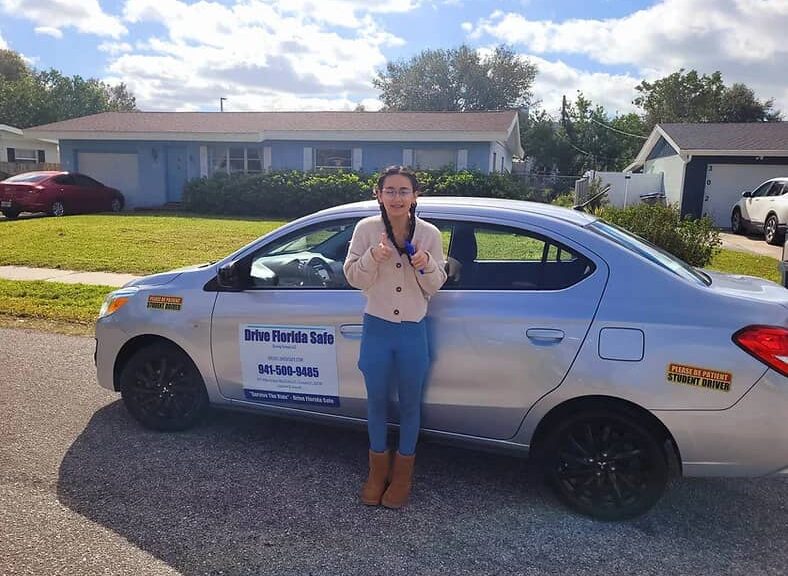As seasons change, so do driving conditions, presenting unique challenges even to experienced drivers. Navigating through rain, snow, and ice requires a specific set of skills and knowledge to ensure safety. Driving lessons in Sarasota provides essential tips for driving in adverse weather conditions, including additional advice for handling Florida’s seasonal changes.
Driving in Rain: Slow Down and Keep Your Distance
Rain can quickly make roads slippery and reduce visibility. Here’s how to handle driving in the rain effectively:
Slow Down: Reducing your speed is crucial to prevent hydroplaning, a condition where your tires lose contact with the road due to water buildup, causing a loss of control. Take driving lessons in Sarasota and learn how to move slowly during wet conditions.
Increase Following Distance: Wet roads provide less grip, so it’s important to give yourself more time to stop by maintaining a greater distance between your vehicle and the one in front of you.
Use Your Wipers and Defrosters: Ensure clear visibility at all times by using your windshield wipers and defrosters effectively. This will help you see the road and other vehicles more clearly.
Avoid Standing Water: Driving through large puddles can impair your control or damage your car. It’s best to avoid these areas if possible.
Florida-Specific Tips: In Florida, where sudden thunderstorms are common, be extra vigilant for flash floods. Never attempt to drive through flooded areas, as the water may be deeper than it appears and can cause your vehicle to stall or be swept away. It is important that you take scf traffic school approved driving lessons to increase your efficiency.
Snowy Conditions: Tread Carefully
Driving in snow can be tricky, but with these tips, you can stay safe on snowy roads:
Use Winter Tires: Winter tires are designed to provide better traction in snowy conditions, helping you maintain control of your vehicle.
Drive Slowly: Everything takes longer on snow-covered roads, from accelerating to stopping. Reduce your speed to allow for these increased distances.
Don’t Stop on Hills: It can be challenging to get moving again on an icy hill, so try to maintain a steady speed without stopping.
Keep Your Car Clear: Before driving, remove snow from the roof, windows, and lights of your car. This ensures maximum visibility and prevents snow from flying off and obstructing the view of other drivers.
Florida-Specific Tips: While snow is rare in Florida, cold snaps can cause frost and ice patches on roads, especially on bridges and overpasses. Be cautious during these conditions and watch for black ice, which can be invisible but extremely slippery. Learn how to drive in these conditions by taking professional assistance from Florida safe driving school.
Ice is Dicey: The Invisible Hazard
Black ice is a winter driver’s nemesis. Here’s how to deal with this invisible hazard:
Be Extra Cautious: Black ice makes roads extremely slippery. Drive slowly and carefully, especially in shaded areas and bridges where ice is more likely to form.
Do Not Brake Suddenly: If you start sliding, gently apply the brakes rather than slamming them to avoid further loss of control.
Turn Into the Slide: If your rear wheels start to slide, turn your steering wheel in the direction of the slide. This can help you regain control of your vehicle.
Florida-Specific Tips: In Florida, ice on roads is a rare occurrence but can happen during cold fronts. Pay special attention to weather forecasts and road conditions during these times. Always assume that shaded areas and bridges could have icy patches.
Additional Tips for Florida Drivers
Florida’s weather can be unpredictable, with sudden changes and unique challenges. Here are some additional tips to keep you safe on the road:
Beware of Fog: Florida’s humid conditions often lead to fog, especially in the early morning and late evening. Use your low-beam headlights and reduce speed to maintain visibility.
Hurricane Season Preparedness: During hurricane season, be aware of evacuation routes and keep an emergency kit in your car. Avoid driving during high winds and heavy rains associated with tropical storms and hurricanes.
Heat and Tire Pressure: The intense heat in Florida can affect your tire pressure. Regularly check your tires to ensure they are properly inflated, as underinflated tires can lead to blowouts. Take professional driving knowledge from Sarasota driving schools take ensure safety and calmness during harsh conditions.









